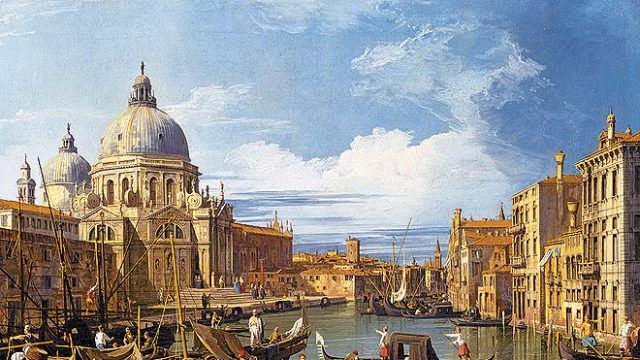In this issue on European journeys, we figured it would be a good idea to trace our fascination with the continent back to the Grand Tour, a phenomenon that ushered in organised travel for those who could afford it. From about the late 17th century till the advent of large-scale rail networks in the middle of the 19th century, English men and women of means, usually those with an Oxbridge education and keen to see first-hand the antiquities of the Levant, would travel slowly across the continent, moving from France to Switzerland to Italy and then Greece, soaking up the culture and picking up European tastes and refinements along the way. A flamboyant figure like Lord Byron was the epitome of this trend.
All of them would stop at Venice, for many months at a time, and amidst their busy schedules of sightseeing and masked balls, they would also dabble in the arts, picking up paintings from local artists to hang in their drawing rooms back home. The foremost of the ‘Grand Tour’ artists was Canaletto, a Venetian painter and printmaker of rare talent. By the mid 1720s he had already accrued a reputation for the brilliance of his cityscapes, and his paintings were particularly sought out for the way he imbued them with luminosity. As one art agent put it, “…you can see the sun shining in it.”
One of his most celebrated works was this scene: the Grand Canal and the Basilica di Santa Maria bella Salute, which he completed in 1730. At the time, his agent was the English expatriate Joseph Smith, an art collector, banker to the English community in Venice, and generally the go-to person for all the Grand Tourists passing through Italy. For a while he controlled Canaletto’s output, instructing him on likely scenes, which he could then sell at high prices to the English tourists. He later became the British Consul at Venice. Under his patronage, Canaletto’s work flourished. The painter is now commonly considered to be an early precursor to the Impressionists, who learnt a lot from Canaletto’s use of light.
Today, as an Indian of means, if you go to Venice and buy a postcard or a print, know that you’re a part of the long tradition of the Grand Tour.




